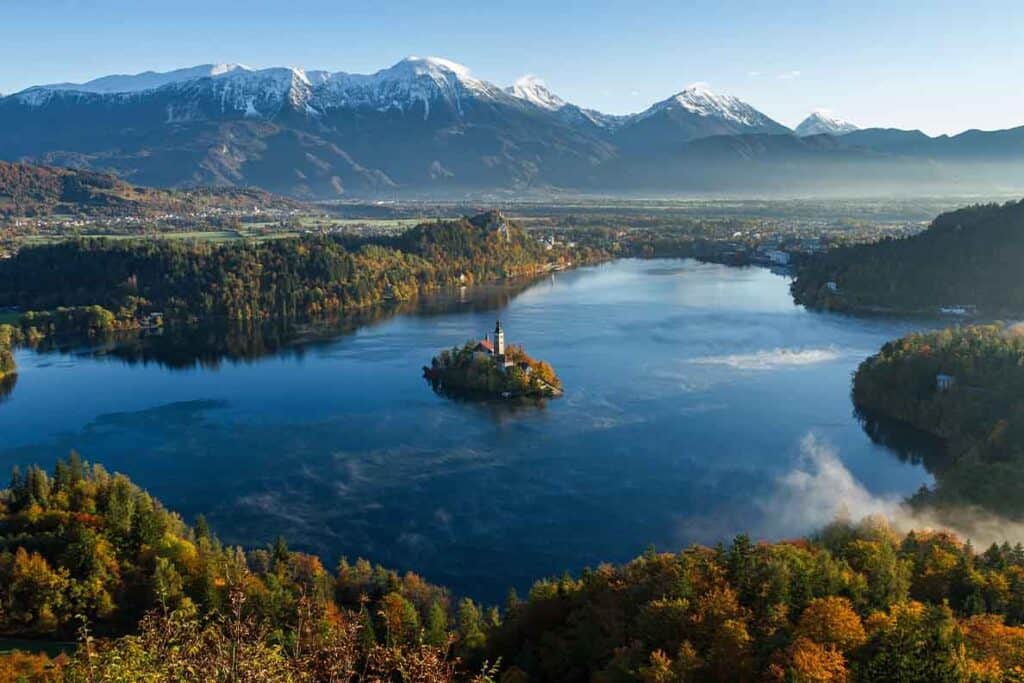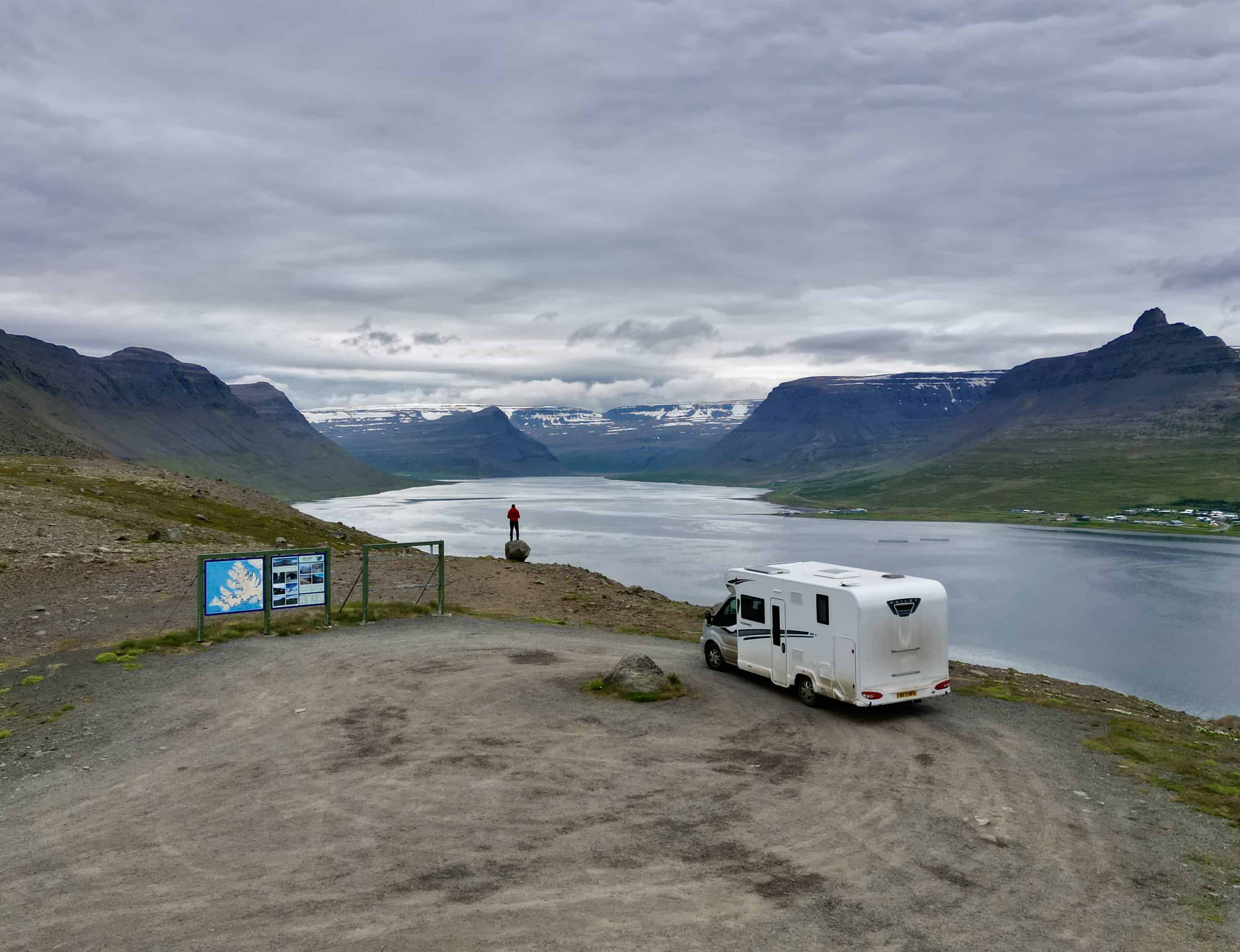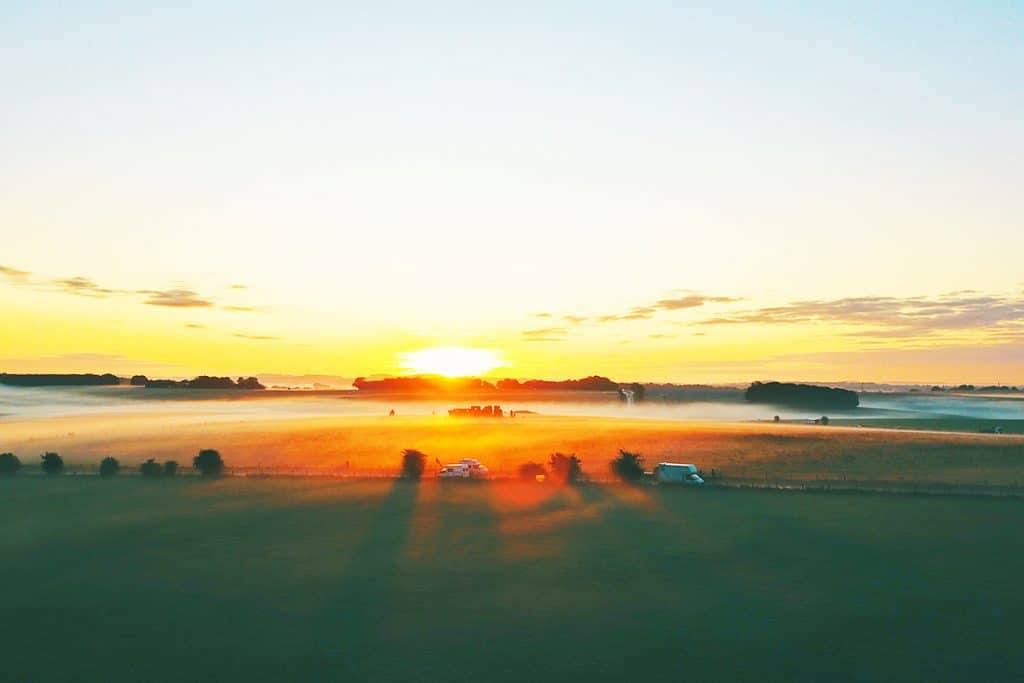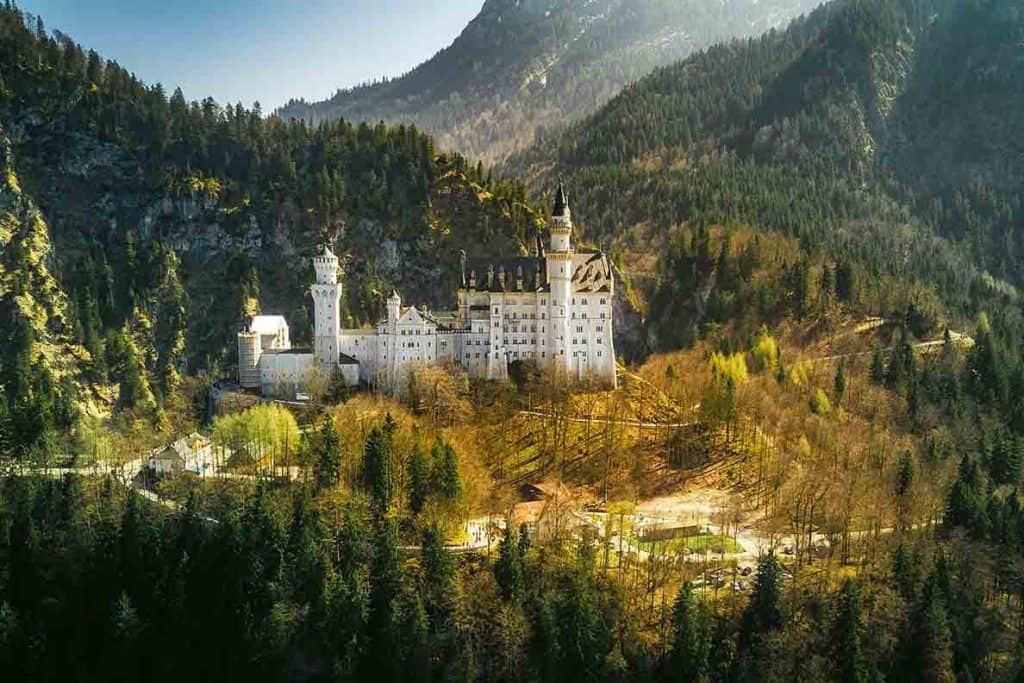Looking for a drone to take on your travels and road trips? Want something portable that doesn’t take up much space? Don’t worry- we’ve done the hard work for you. Here are the best travel drones for beginners and pros to help you capture your epic adventures!
*We work hard to make this the best motorhome travel blog and road trip website possible, full of helpful content for you. The website is supported by our readers, so if you buy through links on this site we may earn a commission- at no extra cost to you. All opinions remain our own.
If you find this post useful, you can also treat us to a coffee – we promise to enjoy it while creating more useful content like this- we might even indulge in a biscuit (or two!)
Finding the Perfect Drone for Travel
If you follow me on Youtube, you’ll know I LOVE to use my drone while travelling. I’ve been lucky enough to film my motorhome in some epic locations, including Ireland, Norway and Iceland!
Having a great drone can help you capture fantastic pictures of the scenery you find as you travel, whether you’re on a road trip, hiking or flying somewhere exotic.
But it’s not always that easy to know which drone to choose, especially if you’re a beginner and want something easy which isn’t going to fly away when you’re not looking.
Or, you know, disappear over the top of a waterfall and never return (like mine did in Ireland… *sob*)

Pros and Cons of Travelling with a Drone
Travelling with a drone isn’t always easy, especially if you’re flying. Even though I’m in my motorhome most of the time, it can still be a pain trying to find out the local laws. So, why do I even bother? What are the pros and cons of travelling with a drone?
Well, the main reason is for fun and to record my adventures. Ever since I quit my job to travel, I’ve taken a drone on our road trips. And I’ve never been disappointed by having it. (Except for that time it sunk in the lake. Or the time I lost it over a waterfall…)
Don’t get me wrong, there have been times where the weather hasn’t played nicely, and there were times when I wanted to fly it but the airspace was restricted but, on balance, it’s been an excellent addition to my travels.
There are HUNDREDS of photographs on this website- and most of my favourites are taken using the drone. For me, that’s reason enough to keep bringing it along.
What to Look for When Choosing the Perfect Drone for Travel
Whether you’re looking for your first drone, or just one which is more portable than your regular drone, there are several important factors to consider when choosing the best travel drone for you. Of course, the most important question is ‘what do you want the drone for?’
Best travel drone- questions to ask
1)- Is the drone for an adult or a child? (If a child, go cheap to start)
2)- Have you flown a drone or model airplane before? (If no, consider going cheaper until you build your confidence)
3)- Is it for fun, or do you want to get high-quality footage that you will use on a blog/ video/ for future reference? (If so, choose the best you can afford)
4)- Do you want a high capability, maximum range and a wide-angle lens so you can capture as much as possible?
5)- Will you be unbearably heartbroken if it drops/ crashed/ sinks into a lake? (If so, go for a cheaper model and don’t spend the extra cost for lots of additional features)
Here are the main things to look for when assessing the options. I’ve put these in a rough order of importance, but obviously budget vs features will always be a trade off.
- Weight (I’ll explain why below)
- Camera Quality and video footage quality
- Budget
- Portability
- Flight features, such as maximum flight speed and wind resistance
- Safety features (such as obstacle avoidance sensors)
- Battery life/ long flight time (and how long it takes to charge)
- Advanced Features
- Additional accessories
Why is weight so important when choosing a drone for travel?
The laws regarding drones vary from country to country. If you’re touring Europe, you can find the rules very different even just a few miles apart.
It’s essential to check the specific rules and guidelines set by the aviation authority or regulatory body of the country you plan to fly your drone in.
However, these are some general weight categories that are often used as guidelines:
- Mini/ Micro/Nano Drones: These are the smallest and lightest drones and typically weigh less than 250g (0.55lbs). In some countries, (such as the United States and United Kingdom), drones in this weight category may be exempt from certain regulations, but it’s still important to familiarise yourself with local rules.
- Small Drones: Small drones generally weigh between 250 grams (0.55 pounds) and 2 kilograms (4.4 pounds). In many countries, these drones will have restrictions on flying near people or in certain airspace.
- Medium/Large Drones: Medium and larger drones typically weigh over 2 kilograms (4.4 pounds) and can be much larger. Flying these drones often requires registration, pilot certification, adherence to airspace restrictions, and other safety measures.
IMPORTANT: Weight alone is not the sole determining factor for drone regulations. Other factors, such as the purpose of the flight (recreational or commercial), the location of operation (urban or rural areas), and the presence of airports or other sensitive locations nearby, can also influence the rules and restrictions.
As an ex air-traffic controller, please please PLEASE do not infringe or fly in airspace you shouldn’t. One of the many reasons I’m such a big fan of DJI drones is the software they use is fantastic at warning you if you are in a restricted area.
How to find out about restricted areas when travelling
The aviation authority of the country you are visiting will probably have released information on how and where you are allowed to fly your drone. Some are better than others.
For example, the CAA in the UK have a fantastic app called Drone Assist which is free to use (or was at the time of writing this) and it’s very helpful at informing you where it’s ok to fly and how to do so safely. It’s a good idea to find out the local laws and stick to them.

The Travel Drone I have (& LOVE!)
When I started travelling alone, I did a LOT of research into the best drone for travelling for beginners, but which would still give me great results which I can use on social media, YouTube and in magazines when I write articles for them.
I tried a few options, but when I moved to my current drone, it was an instant success. Even though I was really intimidated by spending so much money on a drone, it is SO EASY to use- and take awesome photos and videos with.
I have the DJI Mini 3 Pro. It’s a compact size, under 250g, which means I am exempt from a lot of scary and complicated drone laws, but the camera and picture quality are SUPERB. It has up to 34 minutes of flight time, can be flown in fairly windy conditions and has decent battery life, intelligent flight modes, flight speed and can film in both horizontal and vertical modes (hello, Instagram reels!)
The AMAZING DJI Mini 3 Pro Drone
This drone is the perfect travel drone. It’s under 250g, it has an incredible camera and it’s got plenty of useful features like stabilisers and auto tracking. It’s been a game changer for my solo road trips.
Put it this way, I like it so much for travel photography and filming my trips that when I accidentally flew my first one over a waterfall and it got lost (I think the spray damaged it and then it lost signal), I paid to get another one. Recommendations don’t get much better than that!
Some of the highlights of the DJI Mini 3 Pro include:
- Weight. Being less than 249 g, Mini 3 Pro doesn’t require registration in most countries and regions; The foldable and compact design also makes it easy to carry on any adventure
- Camera. Capture your trip in remarkable detail with 4K/60fps video footage and 48 MP photos; The advanced camera system supports dual native ISO and f/1.7 aperture for high-quality imagery, night and day
- Vertical or Horizontal shooting. The redesigned DJI Mini 3 Pro offers True Vertical Shooting for portrait shots, ideal for social media; The gimbal rotates 90, so you don’t have to compromise image quality
- Size- this is one of the best compact drones on the market
- Good flight time – Enjoy an extended flight time of up to 34 minutes and capture and explore more of your surroundings
- Collision avoidance. The sensors on this tiny drone are fantastic
I highly recommend getting the DJI RC-N1 Remote Controller (the square controller), which is SO MUCH easier to use rather than using your phone. Even better, this remote control is compatible with some of the other DJI drones too, so you can use it if you choose to upgrade to a new drone in the future.
Alternative Product DJI Mini 4 Pro
Other Kit you need with the DJI Mavic Pro Drone
There are lots of ‘extras’ you can buy for drones. Some gear is essential, some useful and some a bit gimmicky.
Essentials you need are:
I like to cary my drone in a hard case, but then put it all in a backpack so it’s easier to hike with.
Holy Moly- that’s expensive!
Yep. Sadly, decent travel drones are not cheap. But there are some cheaper DJI drone options for you if the budget doesn’t stretch to the pro.
DJI Mini 3- perfect travel drone for beginners
Initially, I bought the DJI Mini 3 (not pro) drone. This drone is identical to the pro in many ways, with the same high quality manufacturing and foldable design, but hasn’t got the same camera spec or things like the advanced tracking, which is something I really wanted.
However, if you don’t want to sell your images or use them professionally, you’ll find the Mini 3 is more than enough drone to capture your travels- and is usually around 30% cheaper than the Mini pro.
The mini 3 was actually released 6 months AFTER the pro, so it has some small technology updates and was created specifically to fill the gap between ‘I want a decent drone that will capture amazing photos of my trips’ and ‘I’d quite like to eat next month too’
DJI Mini 2- a budget friendly travel drone
Another great option is the DJI Mini 2. If you’re a beginner who’s considering whether drones are a good addition to your travels, this could be the perfect drone for you and is usually around £100 cheaper than the Mini 3.
You could also consider the DJI Mavic Mini, but as the price is often very similar to the Mini 2, I’d recommend paying the small amount extra for a much better drone.
A DJI Drone Under £100!?
Let me get this straight- you want a high-quality drone, created by market leaders DJI, AND want it for under £100? Don’t want a lot, do you? ?
Luckily, DJI heard your plea and created a fantastic starter drone for children and beginners.
DJI Tello Ryze- more affordable travel drone
Introducing the DJI Tello Ryze. The littlest member of the DJI family is a great starting point for kids or for fun. The camera is decent enough to not be a complete waste of time, and it will get you used to flying a drone if you’ve never done it before.
TESTER REVIEW: I used my Tello for about 2 months before I decided to upgrade to the Mini 3 Pro and it was definitely a good learning tool, although I actually found the Mini 3 much easier to control. The Tello also can’t fly in strong winds and the camera is nowhere near as good.
What stands out
- Lightweight, durable and packed with tech – all skill level of pilots can fly with confidence
- Micro design makes the Tello perfect for flying indoors and out
- Start flying by simply tossing the drone into the air
- Perform awesome aerial stunts with just a slide on your phone screen
- Bounce mode enables the drone to fly up and down from your hand automatically
- Land safely even if you lose connection with Failsafe protection
- Program your own flight patterns and learn coding basics with the Scratch coding system
Essential info
- Flight time: 13 min
- Speed: 8 m/s
- Body dimensions: 98 x 92.5 x 41 mm
- Propellers: 3 inch
- Weight: 80g
- Camera: 720p
- Video transmission range: 100m
Best Affordable Travel Drones Under 250g (other makes)
I know going straight in with a DJI drone can seem intimidating, even something small like the DJI mini. But there’s a reason they’re top of this list of best drones- they are fantastic quality, easy to fly, travel-friendly and the video quality is stable and high quality.
However, there are a couple of other portable drone options from other companies you might wish to consider if you’re looking for a micro drone under 250g that’s a bit cheaper to start with.
Holy Stone HS720 Foldable drone- perfect for beginners
This drone is regularly recommended for first time drone enthusiasts and has excellent reviews. It has a 4K camera and many of the features you’d associate with DJI, such as auto-return home, follow me and stabilisation.
Holy Stone HS260- travel drone under £100
This drone is regularly under £100 and is a great option for beginners or children. Of course, you don’t get the advanced features but you also won’t be too upset if you (or your kids!) lose it over a waterfall!
The Best Travel Drone Over 250 grams
Ok, you know the rules, but what if you want a more capable or high-quality drone? If you’re looking at producing professional aerial photography or want the best cameras, you’ll probably need a heavier drone.
DJI Mavic Series- are they good travel drones?
For many years, my husband and I travelled with a DJI Mavic Pro and then a Mavic Pro 2. The Mavic Pro series is worth the extra money for proper drone pilots in my opinion; it’s a little bit more stable, better camera and a little quieter.
NOTE: Don’t confuse the DJI Mavic series with the DJI Mini series- they’re not the same!
DJI Mavic 2 Pro
The Pro 2 uses Hasselblad cameras (which apparently were used to capture the moon landing!) and allows for gorgeous 20-megapixel aerial shots (and the 1-inch CMOS sensor has an active sensing area four times more effective than the original Mavic Pro.) The large sensor also means better performance in low-light environments. .
- Dimensions: Folded: 214×91×84 mm Unfolded: 322×242×84 mm
- Take off Weight: 907g
- Max Flight Time: 31min
- Max photo Resolution: 20MP
- CMOS: 1″ CMOS
- Max Video Resolution: 4K @30 fps
- Max Transmission Distance: 5 km 1080p Video Transmission
- Max Speed: 72 km/h
- Obstacle Sensing: Omnidirectional Obstacle Sensing
- Control Modes: Remote Controller
The f/2 8-f/11 adjustable aperture delivers incredible images both in high and low light environments. When shooting in low light, set the aperture to f/2 8 to allow more light in and to capture bright and clear photos. When shooting in well-lit environments set the aperture to f/11 to lower the shutter speed and make videos smoother.
DJI Mavic 3 Pro
The Mavic 3 recently launched and again it has features which are worth considering if you want to use your drone professionally. But don’t dismiss earlier versions of the Mavic series if you want to save a little money- they’re still fantastic travel drones.
DJI Mavic Air
One step down from the Mavic Pro is the DJI Mavic Air. Whilst not as good as the Pro, it still boasts impressive stats.
You can capture impressive 48MP photos while the 3-axis gimbal lets you create extra smooth 4K/60fps video in 1080p (you can also live stream)
The battery life of up to 34-min allows you to pull off epic shots while the obstacle avoidance system uses forward, backward, and downward sensors for improved safety
Spotlight 2.0 keeps the camera locked on a subject while you fly freely. ActiveTrack 3.0 keeps the subjects in the centre of the frame.
- Dimensions: Folded: 180×79×84 mm Unfolded: 183×253×77 mm
- Take off Weight: 570g
- Max Flight Time: 34min
- Max photo Resolution: 48MP
- CMOS: 1/2″ CMOS
- Max Video Resolution: 4K @60 fps
- Max Transmission Distance: 6 km 1080p Video Transmission
- Max Speed: 68 km/h
- Obstacle Sensing: Forward + Backward + Downward Obstacle Sensing
- Control Modes: Remote Controller
Accessories I recommend with Your Travel Drone
If you’re using the drone while travelling, I strongly recommend you get the following, no matter which drone you buy:
- A good case (hard case is great but is bulkier than a soft one)
- Extra batteries
- Spare blades
- ND filters (#16 is the one I use most often)

Where to Buy Affordable Travel Drones
There are lots and lots and LOTS of drone packages and deals you can find online. Might I suggest that you buy either directly from the DJI store, or from the DJI store on Amazon. That way you know you’ll get a reliable product. Sure, you can probably find cheaper deals- but often those products are refurbished and not always 100% genuine.
Travel Drones – Staying Legal
It’s all well and good buying a drone- but your next step is to make sure you are flying it legally.
I’m not going to list step-by-step instructions here, in case things change and the information goes out of date, but it is essential that you find out and comply with not only the laws in your home country, but also in any country you will be visiting with your drone.
It’s also extremely important to obey local laws and airspace restrictions, such as not flying too close to airports, parachute drop zones, hospitals and military airspace- to name a few!
(Seriously, as an ex-air traffic controller who once had to hold 50+ aircraft over London who were all running out of fuel and couldn’t land because a drone was playing over the runway at Heathrow, I cannot stress this enough!!)

UK legalities for drones
In the UK, we have it very lucky. NATS (National Air Traffic Service- my ex-employers) and the CAA want to work WITH drone operators of all types and make it easy for everyone to play in the skies. They have created the Drone Safe website and the Drone Assist app, available for download to all smartphones.
DJI also work hard to ensure that their maps stay up to date, so when you switch it on, it will tell you if you are in a restricted area, near an airport etc etc. PLEASE pay attention to this- drones into plane engines do not work well. (This system is also another reason we choose DJI- it’s been excellent so far across Europe.)
Using your travel drone
Having said that, even in open airspace, you need to be vigilant. A drone can shred a hang glider and cause huge damage to a light aircraft or helicopter. Ideally, you need one pilot and one spotter- someone who keeps an eye out for anything else happening in the skies.
You will probably also need to legally mark your drone with the appropriate information. The Drone Safe website will tell you what you need to do and how to register your drone in the UK.
Don’t forget to research BEFORE you travel. Some countries do not allow drones AT ALL (such as Jordan, which we visited in 2019 and had to leave our drone behind.) Although many airlines will allow you to fly with a drone (be careful about the batteries), that doesn’t mean the government will allow you to enter with one.
Best & Affordable Travel Drones- Final Thoughts
Despite my rant in the previous section, it’s not as terrifying as it sounds. Again, the authorities try to make it easy for people- both from a legal and a safety standpoint- so don’t let it put you off.
All in all, we LOVE travelling with a drone and highly recommend it to EVERYONE. If you do get one, we’d love to see your photos. If you’re on Instagram, feel free to tag me and I’ll share them!
How else can I help you today?

Last update on 2024-05-01 / Affiliate links / Images from Amazon Product Advertising API


